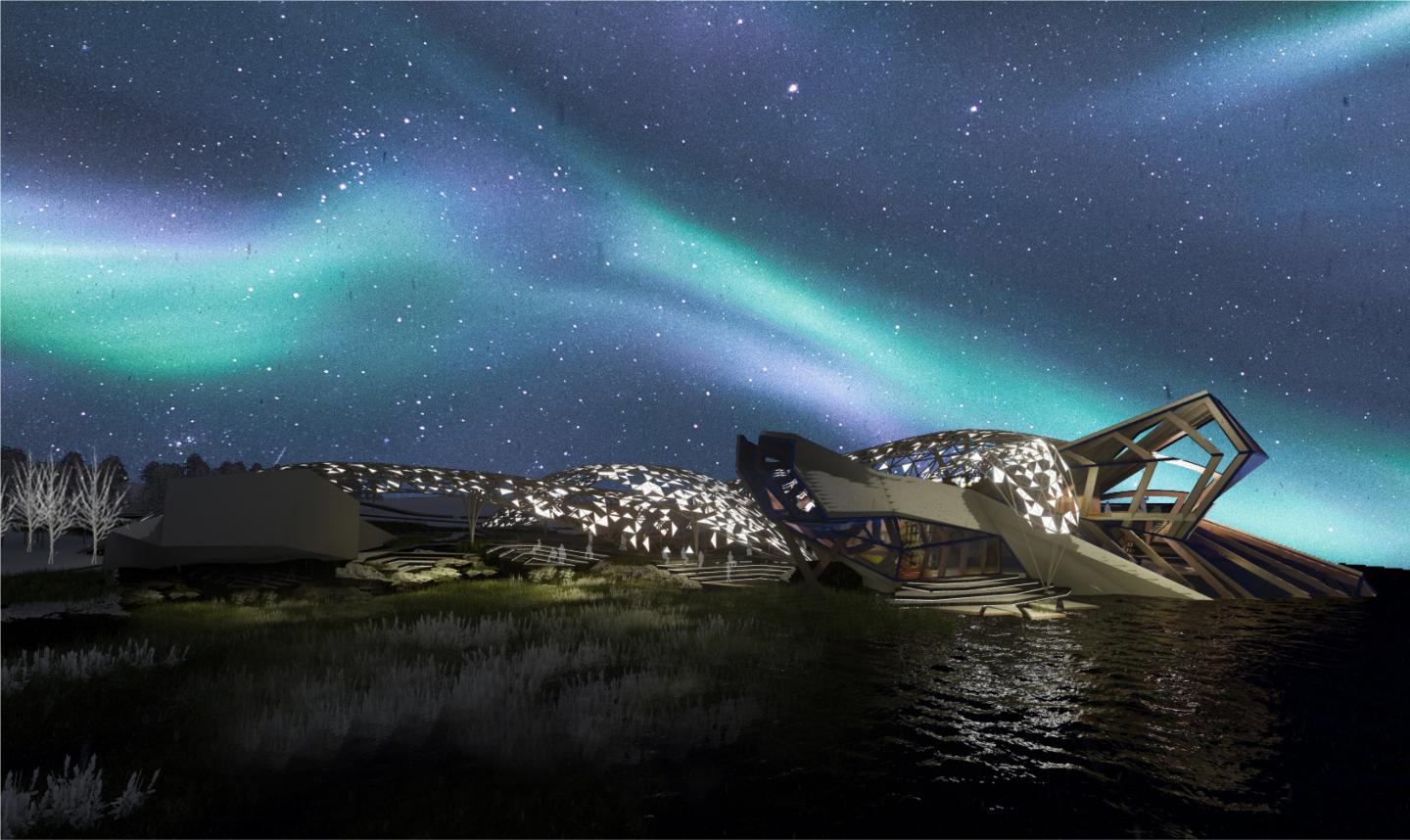Iceland is becoming a very popular touristic destination because of its beautiful natural sceneries (volcanoes, waterfalls, mountains, geothermal lakes, etc.), its rich marine biodiversity, and the northern lights. Though this tourism situation has obvious benefits, it also has the potential to evolve into a dangerous situation. Since Iceland is attractive to tourists mostly because of its nature, designing and implementing a sustainable tourism mechanism is crucial to protect the delicate environmental balance and to prevent the risk of over-tourism, which this project aims to achieve.
The title “Hvala”, can be translated to “whale” in Icelandic, referring to the origin of the project. The initial influence behind this project was the whale-hunting situation in Iceland. Whales are critically endangered animals having important roles especially in maintaining marine ecosystems and combating climate change, therefore, most countries have banned commercial whale-hunting. Though, Iceland is among the very few countries currently continuing such practices. However, it has been recently realized that “whale tourism” (i.e. people coming to Iceland from all around the world for whale-watching) contributes to the Icelandic economy much more than “whale-hunting”. Therefore, attempting to include this shift from whaling to whale-watching within the aforementioned sustainable tourism mechanism was the starting point of this design.
On a large scale, Iceland is majorly combating environmental issues; the most important ones being deforestation and the draining of wetlands. The country has experienced one of the worst examples of deforestation in the world; the land area covered by forests has decreased to 1% from approximately 35%. Parallel to this, problems related to deforestation and climate change, such as erosion and loss of vegetation, are also quite common.
Even though poverty in Iceland is generally low and the Icelanders have high income and employment rates, according to 2017 data, the world’s highest rate of anti-depressant consumption is in Iceland, and Seasonal Affective Disorder (SAD) is also seen quite frequently. This is often linked to the cold, windy, and harsh climatic conditions, unpredictable weather, and low daylight availability in winters. For example, Reykjavik receives only 4 hours of daylight on December 21, which makes it difficult for Icelanders to enjoy spending time outdoors.
On the scale of Reykjavik, car dependency, the lack of an effective public transportation system, and urban sprawl could be considered as Reykjavik’s dominant urban problems. In fact, it is argued that the depression of Icelanders can also be related to the isolated lifestyle of the residents as a result of this vehicle-oriented urban development.
In order to resolve these aforementioned issues, an Urban Dogbone concept has been adopted, linking the project site with the two touristic districts of Reykjavik (1: the city center, 2: the mountain/river ecosystem) to distribute the touristic stress of the city, therefore, promoting tourism in a sustainable way. City-scale and neighborhood-scale strategies are proposed based upon the principles of Smart Growth. Under the scope of sustainable tourism, the needs of both tourists and locals have been considered, and functions are proposed accordingly. Increasing walkability and creating pedestrian-friendly communities have been important considerations.
The Research & Education Facility has been selected as the area of focus, which is proposed to function as a research center targeting the specific environmental issues of Iceland to find ways to solve them, and a visitor center for public education and awareness. For example, the Wetland & Forest Research Center investigates plant DNA and soil conditions to be applied in afforestation activities and wetland rehabilitation. The functions are placed in folded structures resembling rocks on water. These “rocks” are connected with a cloud-like parametric semi-open public area, which provides shelter and protection to allow people to spend time outdoors even during cold weather conditions.
The Observatory & Visitor Center has been selected for further architectural development, acting as a location presenting both the aforementioned research activities, and the wonders of Iceland to the visitors, including the wetland biodiversity, the forest ecosystem, the northern lights, and the marine heritage.
2021
0000
STRUCTURE
The structural system for the folded geometries is a steel skeleton, inspired by the ribcage of a whale. Truss slabs and underwater piers are attached to this skeleton, which is braced by a diagrid system, and clad with anodized aluminum roof panels. Structural glazing is used to maximize view considering the observatory function of the design, and smart glass is used for thermal concerns. For the parametric geometries, space frame and tree columns are utilized.
MATERIALS
The use of light and color in the parametric public area was achieved by using color-filtered glass and polycarbonate panels, mimicking the northern lights. Using color in the design had the intention of benefitting the visitors psychologically.
Designer: İpek Düzova
Supervisor: Mark Paul Frederickson





















